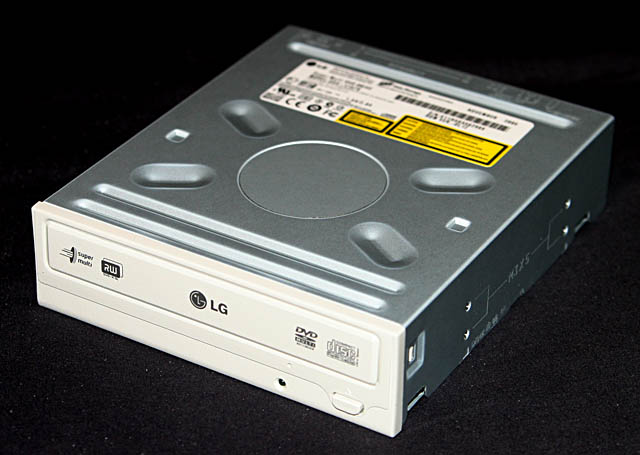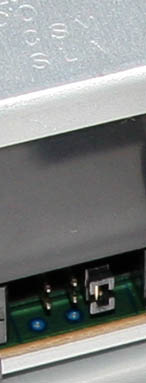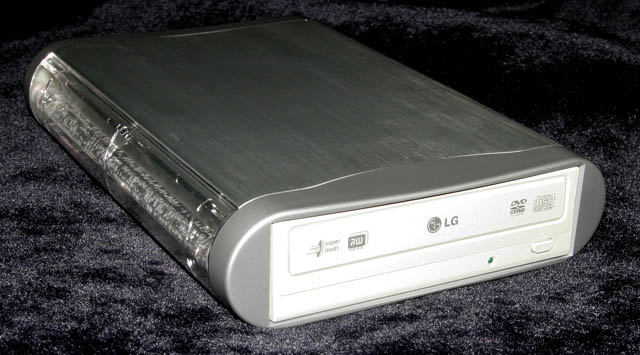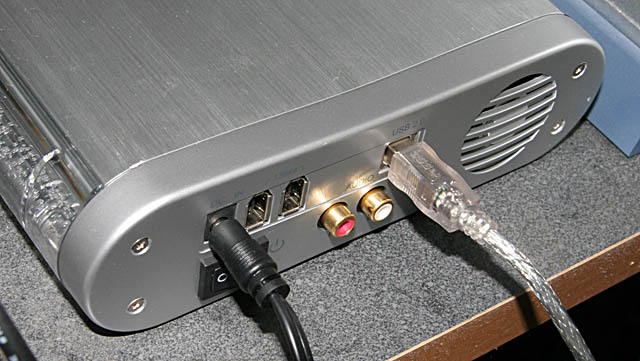Here's a tutorial on converting an internal drive into an external drive with the use of a drive enclosure. Why would you want to do this? For a couple of reasons. First off, some companies charge an arm and a leg for external drives. You can make your own external by getting an inexpensive internal drive, and putting it in an inexpensive drive enclosure.
The other reason is that it gives you more flexibility...once you're used to doing this, you can swap out any internal drive to an enclosure, or take a drive you'd previously made external and put it back inside your computer. Also, there limits to how many IDE drives you can have, while you can have a ton of external USB drives.
It's pretty simple, so let's get started!

I'm going to use the Kingwin KH-525UF-S 5.25" Enclosure. I picked it because I'd read some pretty good reviews from other people, and it handled both USB 2.0 and Firewire.

The front and side view. The front panel pops off if you're putting a full size 5.25" drive into it. If it's a smaller drive used with an installation mount, you could probably put the faceplate back on.

The rear connectors. Power in, 2 Firewire ports, USB 2.0, the power switch, and RCA audio jacks. The cooling fan is on the right.

The connectors, once you've unscrewed the back plate and opened the case. Very straight forward...power, IDE cable, and audio connector.

I'm going to put an LG GSA-4167B BG DVD burner in this case. It received some good reviews, and Newegg had an OEM model for $39.00 (!)

As you can see, this model is an internal drive, usually meant to be installed in a standard drive bay of a PC.

The business end of a typical CD/DVD drive. From left to right, we have the 2 audio connectors, the jumpers, the IDE connector, and the power connector. The audio, IDE and power connectors are all "keyed" meaning it's almost impossible to plug the cable in the wrong way. The jumpers however, could be set incorrectly depending on where the drive may or may not have been used previously.

An awesome jumper photo yes? Behold my macro skillz! Jumpers are very small connectors, and their job is to bridge, or jump, two connecting pins together. In this image there are 3 vertical sets of pins, and the 2 pins on the right have a jumper that's connecting them. Sometimes the drive shows you which jumper settings need to be used, and sometimes you'll have to use the manual.
IDE drives can be set for Master, Slave, or CS which stands for Cable Select. CS should only be used if you're sure that your motherboard supports CS mode. For our purposes, we want to set the jumper to Master, which is where it is in the above photo.

Here you can see the labels that are sometimes on the drive itself (at the very top). On this particular drive, the order left to right is CS, SL and MA for the afore-mentioned modes.
With the front panel removed, we can slide the drive into the enclosure. Note that I've also got the top pulled back, which will make it easier to plug in the cables.

All that's left to do now is plug the audio cable, the IDE cable, and the power connectors into the drive.

Turn the drive upside down, and use the screws that come with the enclosure to screw the drive in place. Otherwise, it could be sliding around in the case, which is bad.

And there you go...the hard part's over! You now have an external DVD burner.

Plug in the power connector and the USB cable (unless you're using Firewire).

And fire it up! Oooohhhh...pretty blue.
So there you go. I hope that was helpful to anybody that's never done something like this before. If there's any part that you found confusing, let me know. Windows XP should recognize the new drive immediately.
If you've got questions about CD or DVD burning, drive types, media or just about anything else you can think of, be sure to visit the forums at CDFreaks.